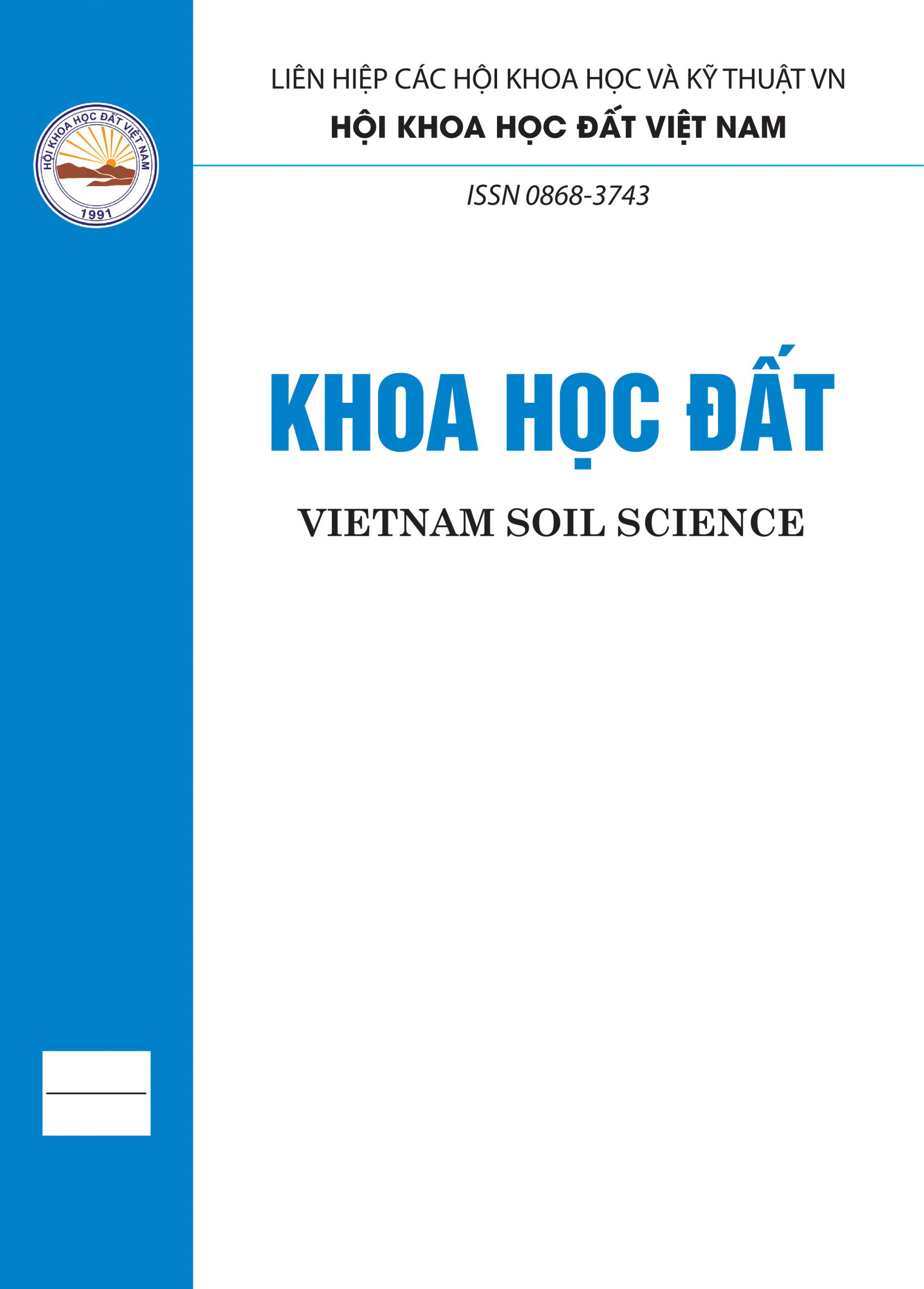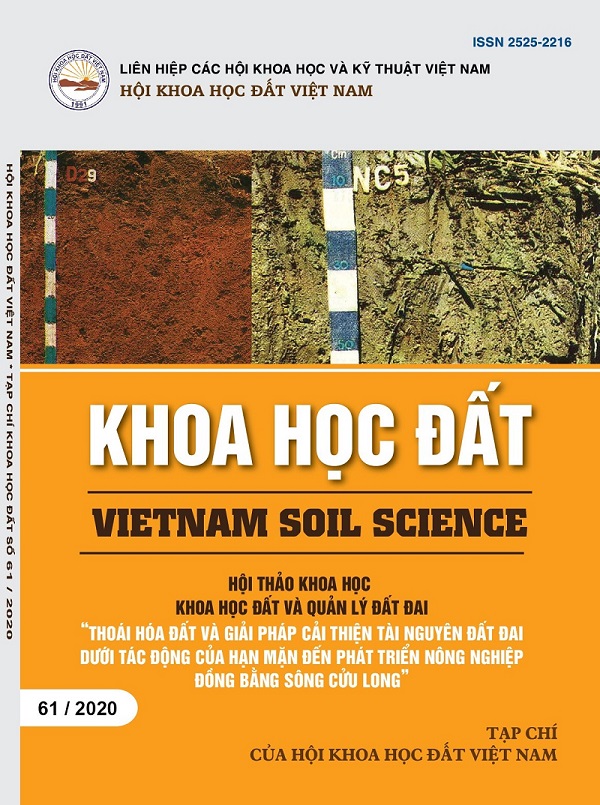Nguyễn Xuân Hải1, Nguyễn Thị Bích Nguyệt2, Nguyễn Xuân Quỳnh3, Phan Bá Học4, Lê Sỹ Chung5, Phạm Anh Hùng6
1 Tổng cục Môi trường, Bộ Tài nguyên và Môi trường.
2 Viện Địa lý Nhân Văn, Viện Hàn lâm Khoa học xã hội Việt Nam.
3 Học viện Khoa học, Công nghệ và Đổi mới sáng tạo, Bộ Khoa học và Công nghệ.
4 Viện Quy hoạch và Thiết kế nông nghiệp.
5 Sở Khoa học và Công nghệ tỉnh Thanh Hoá.
6 Trường Đại học Khoa học Tự nhiên, Đại học Quốc gia Hà Nội
TÓM TẮT
Mai Sơn là huyện miền núi phía Bắc thuộc tỉnh Sơn La, là nơi thường xuyên xảy ra các hiện tượng thiên tai, tác động rất lớn đến sinh hoạt và sản xuất của người dân, đặc biệt là sản xuất nông nghiệp. Nguồn sinh kế của người dân tại huyện Mai Sơn phụ thuộc phần lớn vào sản xuất nông nghiệp với các cây trồng chính là ngô chiếm diện tích lớn (20,73 ngàn ha), lúa (6,24 ngàn ha), mía (4,2 ngàn ha), sắn (3,64 ngàn ha). Dân cư đa số là đồng bào dân tộc, còn hạn chế về tiếp cận, áp dụng khoa học trong sản xuất nông nghiệp. Chính vì vậy họ là những đối tượng chịu những tổn thương mạnh mẽ bởi các tác động của hiện tượng thiên tai cực đoan xảy ra do biến đổi khí hậu.
Thiên tai đã và đang xuất hiện với tần suất và cường độ ngày càng gia tăng tại huyện Mai Sơn. Có 3 loại thiên tai chủ yếu, tác động lớn nhất đó là lũ lụt, hạn hán và rét hại băng giá. Lũ quét cường độ mạnh hơn, nhiều hơn. Hạn hán kéo dài hơn, cường độ mạnh hơn, có tổng số đợt nắng nóng và tổng số ngày nắng nóng tăng hơn. Các đợt rét hại băng giá ngày càng diễn biến bất thường, số ngày lạnh dài và lạnh hơn. Với sự gia tăng tần suất và số lượng các hiện tượng cực đoan của thời tiết liên quan đến sự gia tăng lượng mưa, nhiệt độ, diện tích canh tác bị ảnh hưởng tăng. Cây ngô là cây chủ lực của huyện đang ngày càng bị ảnh hưởng mạnh mẽ bởi lũ lụt, hạn hán, làm giảm năng suất và diện tích, thay đổi lịch mùa vụ.
Từ khóa: Biến đổi khí hậu, hạn hán, nông nghiệp, thổ nhưỡng.
Some characteristics of agricultural production activities and impacts of natural disasters to crops in Mai Son district, Son La province
Nguyen Xuan Hai1, Nguyen Thi Bich Nguyet2, Nguyen Xuan Quynh3, Phan Ba Hoc4, Le Sy Chung5, Pham Anh Hung6
1 Vietnam Environment Administration, Ministry of Natural Resources and Environment
2 Institute of Human Geography, Vietnam Academy of Social Sciences
3 Vietnam Institute of Science Technology and Innovation, Ministry of Science and Technology
4 National Institute of Agricultural Planning and Projection
5 Department of Science and Technology, Thanh Hoa Province
6 VNU-University of Science, Hanoi
SUMMARY
Mai Son is a mountainous district in the northern part of Son La province, where frequent occurrence of natural disasters have a great impact on people’s living and production, especially agricultural production with main crops such as maize (with maximum area 20,730 ha), rice (6,240 ha), sugarcane (4,200 ha) and cassava (3,640 ha) [3]. Meanwhile, the livelihood of people in Mai Son district depends largely on agricultural production. On the other hand, the population of Mai Son district is inhabited by many ethnic minorities who had limited in applying newly advanced technologies in agricultural production. Consequently, the communities in Mai Son district are subjected to severe injuries due to the effects of extreme natural disasters caused by climate change.
Disasters related to meteorological and hydrological phenomena have been appearing increasingly in Mai Son district; increasing in frequency and intensity in recent times. There are three main types of natural disasters, the most severe of which are floods, droughts and freezing cold. Flood swept is more in intensity and quantity. Longer droughts, stronger intensity, total number of hot periods and hot days incresed. Freezing cold is increasingly abnormal, with longer and colder days. With the increase in the frequency and number of extreme weather phenomena associated with the increase in precipitation, in temperature leading to the increase of the affected area of maize and other crops. The agricultural production of the Mai Son district is dominated by maize production, corn production is strongly influenced by increasing floods, drought that reduces productivity and area, and changes in crop schedules.
Keywords: Climate change, drought, agriculture, soil.
Người phản biện: PGS.TS. Đào Châu Thu
Cơ quan: Hội Khoa học Đất Việt Nam
Email: chauthu_9lvh@yahoo.co.uk
Ngày nhận bài: 13/11/2017
Ngày thông qua phản biện: 10/02/2018
Ngày duyệt đăng: 10/8/2018
 Tạp chí
Tạp chí




